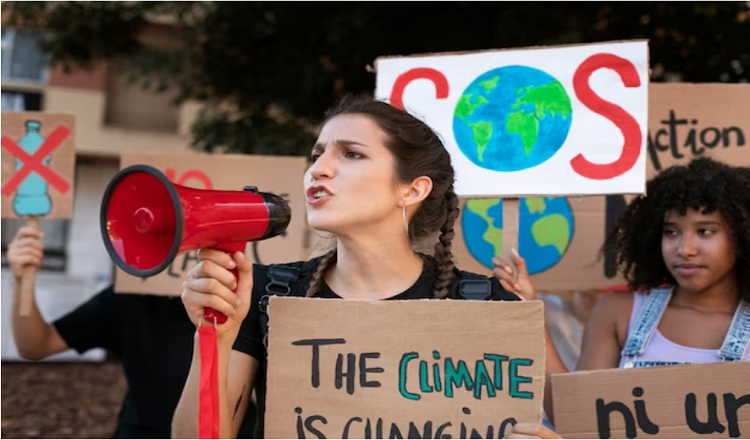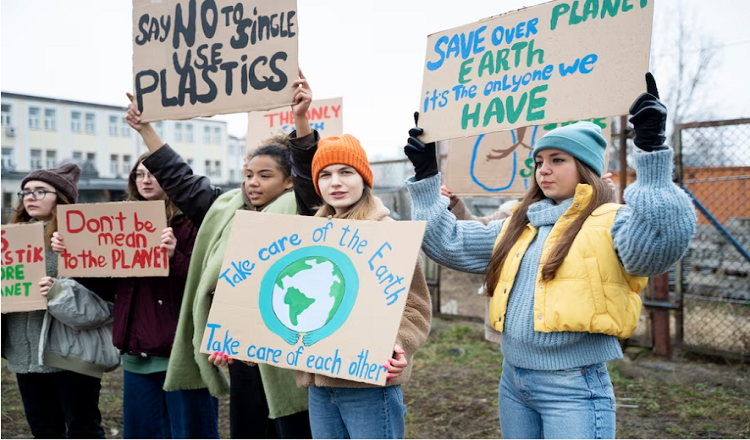The Role of the US in Global Climate Action Examining the US’ Contribution to International Efforts to Address Climate Change
Since climate change poses a major threat to the environment, appropriate action must be taken by all nations. There is no doubt that we need to take action to cut greenhouse gas emissions and make the transition to a low-carbon economy as temperatures rise and extreme weather events increase in frequency. Over the years, the United States has contributed significantly to global efforts to combat climate change, both positively and negatively.
This article’s goal is to study the US’s involvement in worldwide climate action and to investigate both its existing and potential contributions to those efforts. We will examine the history of US participation in global climate agreements, its greenhouse gas emissions and their effects on climate change, as well as its initiatives to switch to renewable energy and environmentally friendly technology. We will also look at the US’s efforts to combat climate change at the state and municipal levels, as well as its international climate financing. By doing this, we intend to give a thorough picture of the US’ contribution to global climate action and emphasize the significance of ongoing international collaboration in resolving this pressing issue. So let’s get started!
US climate accord participation history
Since the United Nations Framework Convention on Climate Change was ratified in 1992, the US has participated in international climate agreements. The nation has significantly influenced the direction of international climate policy, particularly under the Obama administration when it was instrumental in drafting the Paris Agreement. However, the Trump administration announced its decision to leave the Paris Agreement in 2017, citing perceived unfairness in the agreement’s conditions and economic concerns. Widespread condemnation of the withdrawal was expressed both nationally and internationally.
Under the Biden administration, the US has rejoined the Paris Agreement with a renewed commitment to cut American greenhouse gas emissions and support global climate action. The nation has also declared support for various international climate initiatives, including the G7 Climate and Environment Ministerial Meetings and the United Nations Climate Change Conference (COP26). The US’s level of commitment to global climate action is nevertheless a source of concern, especially given the nation’s history of varying climate policies depending on the administration in power.
US efforts in clean technology and renewable energy
In recent years, the US has made substantial efforts to switch to clean technologies and renewable energy, with a concentration on solar and wind energy in particular. The implementation of renewable energy sources has accelerated across the nation, in part due to federal and state laws that encourage their use. These regulations have reduced emissions in the energy sector and assisted in employment creation.
As one of the world’s top investors in clean energy, US regulations have also had an impact on the renewable energy industry globally. The US has contributed money to renewable energy initiatives in underdeveloped nations and has sought to encourage the use of green energy technologies globally. To promote the worldwide shift to renewable energy, however, there is still work to be done, especially in underdeveloped nations where access to money and technology might be a hurdle.
US Emissions, Climate Change Effects
With 15% or thereabouts of the world’s emissions, the US is one of the top producers of greenhouse gases. The combustion of fossil fuels for energy production and transportation accounts for the majority of the nation’s emissions. However, the US has put regulations in place to lower its emissions of greenhouse gases, such as the Clean Power Plan and requirements for car fuel economy.
The United States’ emissions have had a considerable impact on global climate change, including increased temperatures, sea level rise, and extreme weather occurrences. The nation has an obligation to cut its emissions and support international efforts to combat climate change. Even if emissions have decreased, more has to be done to transition to a low-carbon economy and lessen the effects of climate change.
Local and state climate change initiatives
State and municipal governments in the US have taken the lead in combating climate change, enacting a variety of laws to cut emissions and make the switch to sustainable energy. Many states have adopted policies including renewable portfolio standards and carbon pricing, as well as ambitious renewable energy targets. Additionally, local governments have taken steps to cut back on waste management, transportation, and building-related emissions.
In the absence of government action, state and local climate action has significantly impacted innovation and carbon reduction. Successful initiatives include the cap-and-trade system in California and the Climate Leadership and Community Protection Act in New York, which invests in renewable energy and climate resilience while setting high emissions limits. To scale up and duplicate successful state and local climate efforts across the nation, more work needs to be done.
US funding for global climate change
Through different avenues, including the Green Climate Fund and bilateral aid, the US has been a significant donor to global climate financing, funding initiatives in developing nations for climate adaptation and mitigation. These grants have supported a variety of initiatives, from sustainable agriculture and forestry to renewable energy projects.
US climate money has significantly influenced the world’s response to climate change, encouraging the use of clean energy technology and attracting further funding from other nations. To promote the global transition to a low-carbon economy and to strengthen resilience to the effects of climate change, financing must be boosted. The US has promised to raise its contributions to global climate finance, including a vow to give the Green Climate Fund $2 billion.
Conclusion
The US has made a considerable contribution to the fight against climate change, both historically through its participation in international climate agreements and currently through its efforts to cut emissions and make the switch to renewable energy. State and municipal governments have also taken the initiative in combating climate change, enacting laws and programs that have made a big difference.
To address the grave threat posed by climate change, however, there is still more work to be done, and the US must play a significant part in this endeavor. To meet the challenging objectives of the Paris Agreement and mitigate the worst effects of climate change, the nation’s participation in global climate action is essential.
Looking ahead, the US has the chance to play a leading role in combating climate change by putting in place laws and programs that encourage innovation and cut emissions, as well as by assisting the world in its transition to a low-carbon economy by way of international climate financing. In order to create a sustainable future for all people, it is crucial that the US keeps climate action at the top of its priority list and collaborates with other nations.
Read More You May Like:














Post Comment